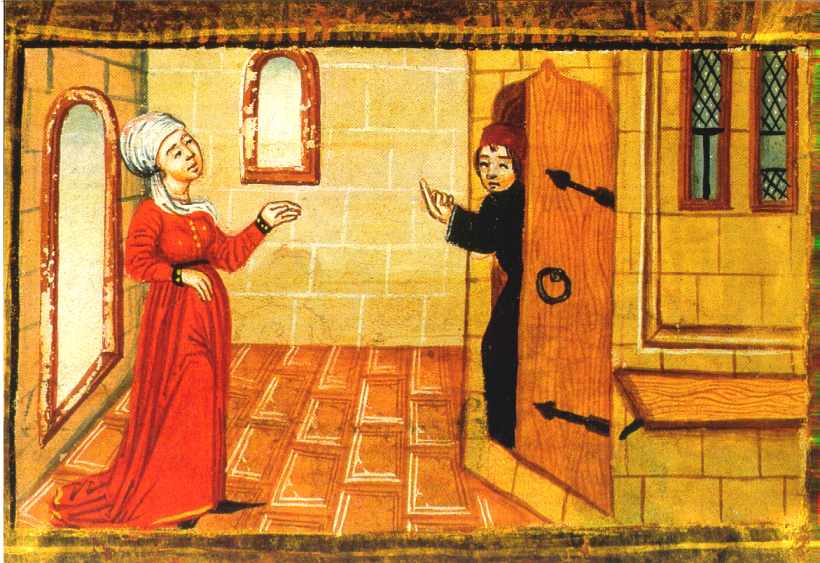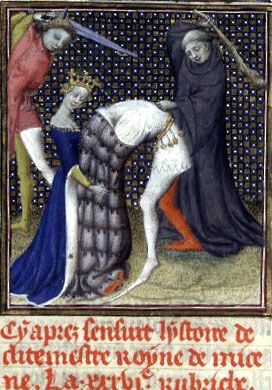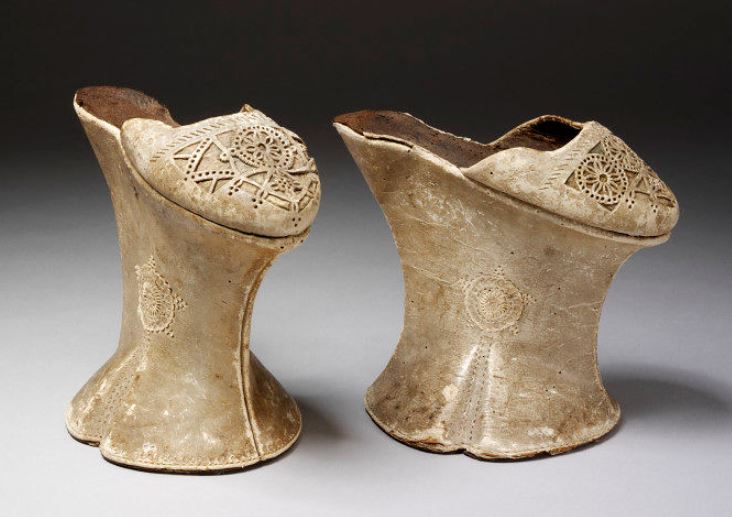Prostitutes’ Symbols October 9, 2016
Author: Beach Combing | in : Medieval , trackback
Prostitutes have sometimes chosen to mark themselves apart, the red light at the window, and sometimes they have been obliged to mark themselves apart. This was particularly evident in medieval Europe, where the arbiters of taste would have loved to have colour-coded all society. This was the same cookie-cutter mentality that put merchants in red died gowns and pinned yellow stars to the backs or breasts of Jewish citizens. In different cities and regions prostitutes were instructed to dress with symbols of some sort so that they could be immediately picked out. This was not, of course, for the benefit of clients but so that normal people could keep these peccatrices at arm’s length. Beach has, very gently, been putting together a list of these symbols for the edification of the present age. These are drawn from several different sources.
Beaucaire: a mark on the left arm (a tattoo or ink or…? See Toulouse below).
Berne: red cap.
Bristol: striped hoods.
Castres: a man’s hat and a scarlet belt.
Florence: gloves and bells on the head (in the hair?) and high-heeled slippers.
Languedoc: a cord belt.
Leipzig: yellow cloak trimmed with blue.
London: striped hoods.
Mantua: white cloak and badge on chest (what on earth did it look like?).
Marseilles: striped tunic.
Milan: black cloak.
Nimes: a sleeve of a special colour.
Pisa: a yellow headband.
Strasbourg: black and white sugarloaf hat.
Toulouse: a mark on their sleeve.
Venice: yellow scarf.
Vienna: yellow scarf.
Zurich: red cap.
At first glance perhaps the Florentine dress code for prostitutes was the most attractive. But bells meant lepers in the middle ages… The prostitute was hence impure. As to the badge in Mantua, we have a 1516 record from London where a prostitute was punished by being made to wear a yellow H (for harlot). Perhaps a Latinate equivalent (P)? Interesting how yellow and stripes are also seen as being godless.
Other prostitute signs from the Middle Ages: drbeachcombing At yahoo DOT com
Invisible writes, 31 Oct 2016: Besides being a symbol of lepers, bells of a very different sort were a fashionable accessory: the so-called folly bells seen on Renaissance jester costumes. There are many illustrations of ultra-modish ladies and gentlemen c. 1400-4 wearing little gilt bells on their girdles and baldricks. See Tres Riches Heures, the month of January, for example.
And (attached, in an inferior reproduction) the Murder of Agamemnon in Boccaccio’s Cleres et nobles femmes Paris BnF, MS fr 598, fol 49v Paris 1403 shows Agamemnon and his murderer to the left, both wearing bells.

There was a resurgence of the fashion in the 16th century, but I’m unable to find the illustration I have in mind. So we can’t really term bells a symbol of uncleanness; they were both a fashion statement and a symbol of folly/frivolity.
As for stripes, they have always been a bit problematic. See The Devil’s Cloth: A History of Stripes (preferably the French edition, which has actual illustrations) by Michel Pastoureau
The Florentine “high heels” were probably chopines, what we would call platform shoes. I’ve attached a pair of ivory kid chopines with a punched design, c. 1600

There are illustrations of professional ladies wearing chopines (and knickers, which were a Venetian sartorial requirement for prostitutes–and I mean knickers in the sense of plus-fours, rather than underpants.) being helped along by a maid or maids. Oddly enough, we find the same configuration of very high shoes and assistants for walking in Ottoman seraglios and among Japanese courtesans, particularly the oiran.


